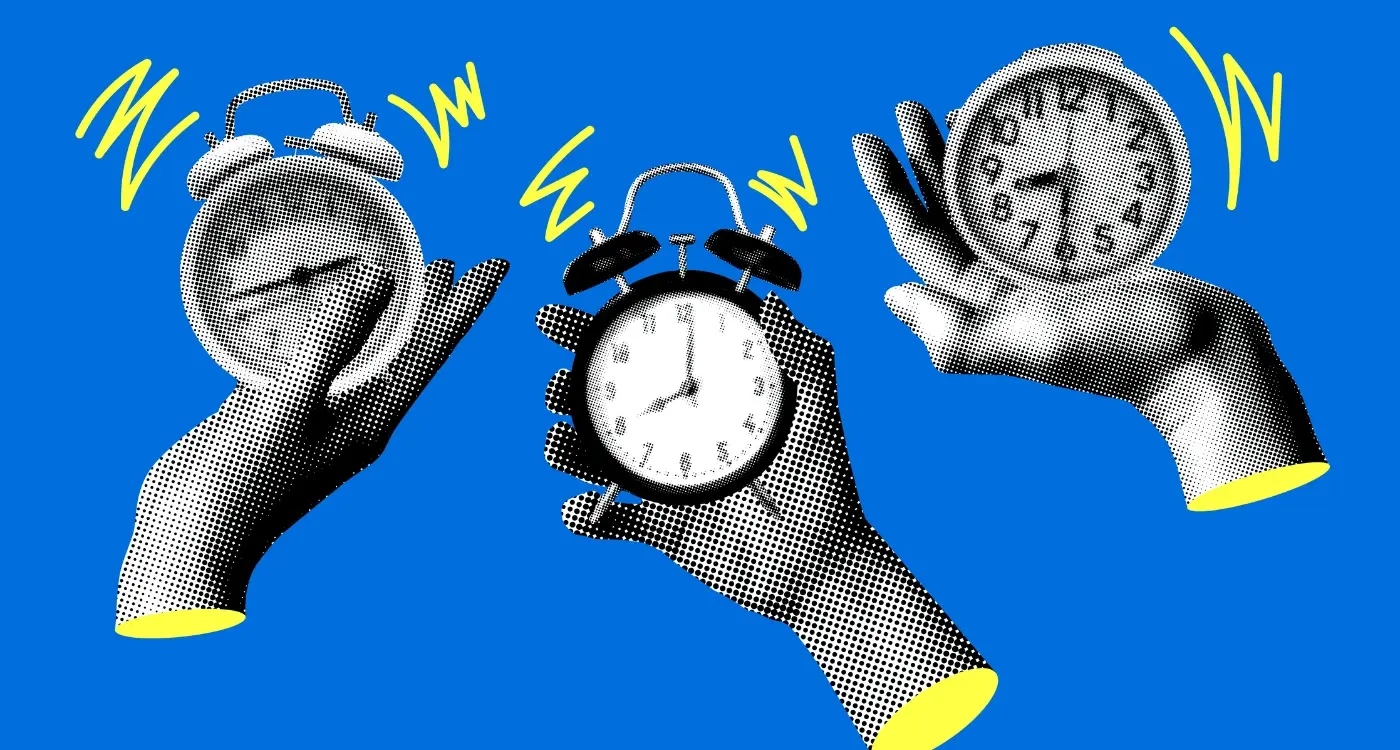Which Psychological Triggers Drive Long-Term App Retention?
Have you ever wondered why you keep opening that same app day after day, week after week, even when you know you probably shouldn't? I've been working in mobile app development for years, and I can tell you that the apps you can't put down aren't successful by accident—they're built using specific psychological triggers that tap into how our brains work.
The difference between an app that gets deleted after a few uses and one that becomes part of your daily routine comes down to understanding user psychology. Most people think app retention is about having cool features or a pretty design, but that's only scratching the surface. The real magic happens when developers understand what makes people tick at a psychological level.
The most successful apps don't just solve problems—they become habits that users don't even think about forming.
Throughout this guide, we'll explore the psychological triggers that drive long-term app retention. We'll look at the science behind user behaviour, how to create emotional connections, and why some apps become addictive whilst others are forgotten. Whether you're building your first app or trying to improve an existing one, understanding these psychological principles will help you create mobile engagement that lasts.
The Science Behind User Behaviour
Understanding why people behave the way they do in apps isn't just guesswork—there's real science behind it. Our brains are wired in specific ways, and these patterns haven't changed much since we lived in caves. The same triggers that kept our ancestors alive now influence whether someone opens your app or deletes it.
When someone uses your app, their brain releases chemicals like dopamine and serotonin. These feel-good chemicals create positive associations with your app. But here's the thing: you can't just randomly trigger these responses and hope for the best. You need to understand when and why they happen.
Key Psychological Drivers
Three main psychological forces drive user behaviour in apps. First, we have the need for completion—people love finishing things. Second, there's our social nature—we want to belong and be recognised. Third, we crave predictable rewards, but with just enough surprise to keep things interesting.
- Completion triggers: Progress bars, streaks, and step-by-step processes
- Social triggers: Likes, shares, comments, and community features
- Reward triggers: Points, badges, unlocks, and surprise bonuses
- Control triggers: Customisation options and personal choices
The most successful apps combine these triggers thoughtfully. They don't overwhelm users with notifications or rewards—they create a steady rhythm that feels natural and keeps people coming back without feeling manipulated.
Creating Emotional Connections
Here's something I've learnt after building hundreds of mobile apps—people don't just use apps, they form relationships with them. The most successful apps aren't just functional tools; they become part of someone's daily routine because they connect on an emotional level. When users feel something positive about your app, they're far more likely to stick around.
The psychological triggers that create these emotional bonds work in predictable ways. Your app might make people feel accomplished when they complete a task, relieved when it solves a problem, or connected when it helps them share with friends. These aren't accidents—they're the result of deliberate design choices that tap into fundamental human needs.
Building Emotional Touchpoints
Smart app developers create multiple moments throughout the user experience where positive emotions can flourish. These touchpoints might include:
- Celebrating small wins with satisfying animations
- Using warm, friendly language in notifications
- Personalising content based on user preferences
- Creating moments of surprise and delight
- Showing empathy during error states
Design your onboarding flow to create an early emotional win within the first 30 seconds—this sets the tone for the entire relationship.
The apps that master emotional connection understand that every interaction is an opportunity to reinforce positive feelings. Whether it's a micro-animation that responds to touch or copy that makes users smile, these details compound over time to create genuine user psychology bonds that drive long-term mobile engagement and app retention.
Habit-Forming Design Patterns
Building habits into your app design isn't about tricking users—it's about creating genuine value that keeps people coming back. The best habit-forming apps solve real problems and make users' lives better in small but meaningful ways.
The Hook Model in Practice
Most successful apps follow a simple pattern: trigger, action, reward, investment. A trigger gets someone to open your app (like a notification or seeing the icon). The action is what they do inside your app—sending a message, checking their fitness progress, or reading an article. The reward is the good feeling they get from completing that action. The investment is when they put something back into the app, like adding a photo or completing their profile.
Take fitness apps as an example. The trigger might be a daily reminder to log your workout. The action is recording what you did at the gym. The reward is seeing your progress chart go up and maybe earning a badge. The investment happens when you set tomorrow's workout goal or add photos of your progress.
Making It Stick Without Being Annoying
The secret is timing and relevance. Good habit-forming design feels helpful, not pushy. Your notifications should arrive when users actually need them—not when it's convenient for your metrics. And the habits you're building should genuinely improve people's daily routines, not just boost your engagement numbers.
Social Psychology in Apps
Humans are social creatures by nature, and this fundamental truth shapes how we interact with mobile apps. When you think about the most successful apps on the market—social media platforms, messaging apps, fitness trackers—they all tap into our basic need for connection and belonging.
Social proof is one of the most powerful psychological triggers you can use for app retention. When users see that others are engaging with your app, they're much more likely to stick around themselves. This could be showing user reviews, displaying how many people have completed a task, or highlighting community activity. People want to be part of something bigger than themselves.
The Power of Community Features
Adding social elements doesn't mean turning your app into Facebook. Simple features like user profiles, comment sections, or sharing capabilities can create meaningful connections between users. Even a basic leaderboard can spark healthy competition that keeps people coming back.
The best apps don't just solve problems—they create communities around those solutions
Social Validation and Recognition
Recognition from peers is incredibly motivating. When users receive likes, comments, or badges visible to others, they experience a dopamine hit that strengthens their attachment to your app. This social validation becomes a powerful retention tool that encourages regular use and deeper engagement with your platform.
Rewards and Motivation Systems
Getting people to open your app once is hard enough—keeping them coming back is where the real challenge begins. After years of building apps, I've learnt that the secret lies in understanding what motivates people; not just what they say motivates them, but what actually drives their behaviour day after day.
The human brain loves rewards, but here's what most app developers get wrong: they think bigger rewards mean better retention. That's simply not true. Small, frequent rewards work much better than occasional big ones because they create a steady stream of positive feelings that keep users engaged.
Types of Rewards That Actually Work
- Progress indicators that show small wins
- Surprise bonuses that appear unexpectedly
- Social recognition like badges or leaderboards
- Unlocked features or content
- Personal achievements that matter to the user
The timing of these rewards matters too. Variable reward schedules—where users don't know exactly when they'll get their next reward—create much stronger habits than predictable patterns. Think about why people keep checking social media; they never know when they'll see something interesting.
But don't go overboard with rewards or you'll create what psychologists call "overjustification effect"—when external rewards actually reduce internal motivation. The best apps use rewards to highlight progress and celebrate genuine achievements, not to manipulate users into mindless tapping.
Building Trust and Security
Trust isn't just about having a secure login—it's one of the most powerful psychological triggers for keeping users coming back to your app. When people feel safe using your product, they're more likely to engage deeply and stick around for the long haul.
Security anxieties run deep in user psychology. Every time someone downloads a new app, there's a small voice in their head asking "Is this safe? Will they steal my data? Can I trust this company?" The apps that answer these concerns upfront are the ones that build lasting relationships with their users.
Visual Trust Signals
Users make snap judgements about trustworthiness within seconds. A professional design, clear privacy statements, and recognisable security badges all contribute to that initial trust assessment. But here's what many developers miss—trust needs to be reinforced throughout the entire user experience, not just at the beginning.
Always explain why you need permissions before asking for them. "We need access to your camera to let you scan barcodes" builds more trust than a generic system popup.
Transparency Builds Confidence
The most successful apps I've worked on have been transparent about how they handle user data. Simple language in privacy policies, clear explanations of what data is collected, and easy-to-find contact information all contribute to mobile engagement through psychological comfort.
| Trust Element | User Impact | Retention Effect |
|---|---|---|
| Clear Privacy Policy | Reduces anxiety | Higher signup completion |
| Secure Payment Icons | Increases purchase confidence | Better conversion rates |
| Regular Security Updates | Maintains long-term trust | Reduces churn over time |
Measuring Psychological Impact
Here's the thing about psychological triggers in apps—you can't improve what you don't measure. I've worked with countless clients who thought they knew what was working, only to discover their assumptions were completely wrong when we started tracking the right metrics.
The key is moving beyond basic analytics like downloads and session length. Those numbers tell you what happened, but not why it happened. We need to dig deeper into user behaviour patterns that reveal the psychological impact of your design choices.
Key Metrics That Matter
Start tracking these specific behavioural indicators that show how well your psychological triggers are working:
- Return visit frequency within the first week
- Feature adoption rates for habit-forming elements
- Time spent on social features versus solo activities
- Completion rates for onboarding sequences
- User progression through reward systems
- Response rates to push notifications by type
Testing Psychological Elements
A/B testing becomes your best friend here. Test different reward frequencies, social proof placements, and trust signals. But here's what most people get wrong—they test too many variables at once. Focus on one psychological element at a time; otherwise you won't know which change actually moved the needle.
The real magic happens when you combine quantitative data with qualitative feedback. User interviews and surveys reveal the emotional responses behind the numbers, giving you the complete picture of your app's psychological impact.
Conclusion
After working with hundreds of apps over the years, I can tell you that understanding user psychology isn't just nice to have—it's what separates successful apps from the ones that get deleted after a week. The psychological triggers we've explored throughout this guide aren't magic tricks; they're fundamental aspects of how our brains work and how we form lasting relationships with digital products.
The apps that achieve genuine long-term retention don't rely on manipulative tactics or dark patterns. Instead, they build genuine value through emotional connections, smart habit-forming design, and trust. They understand that social validation matters, that rewards need to feel meaningful, and that users need to feel safe and understood.
What strikes me most is how these psychological principles work together rather than in isolation. An app might have brilliant reward systems, but without trust, users won't stick around. It might create strong habits, but without emotional connection, those habits feel hollow and eventually break.
The key is balance. Use these psychological insights to create experiences that genuinely serve your users' needs and goals. When you do that, retention becomes a natural byproduct of delivering real value—not something you have to chase through clever tricks or endless notifications.
Share this
Subscribe To Our Learning Centre
You May Also Like
These Related Guides

What's the Best Time to Send Push Notifications to Users?

What Makes Users Delete Apps?



